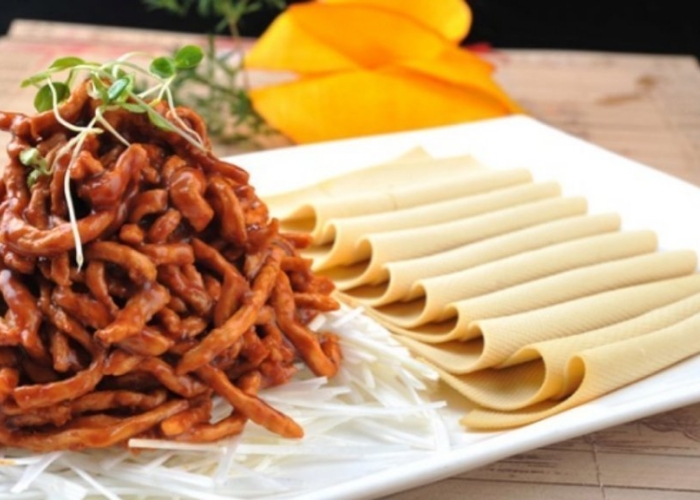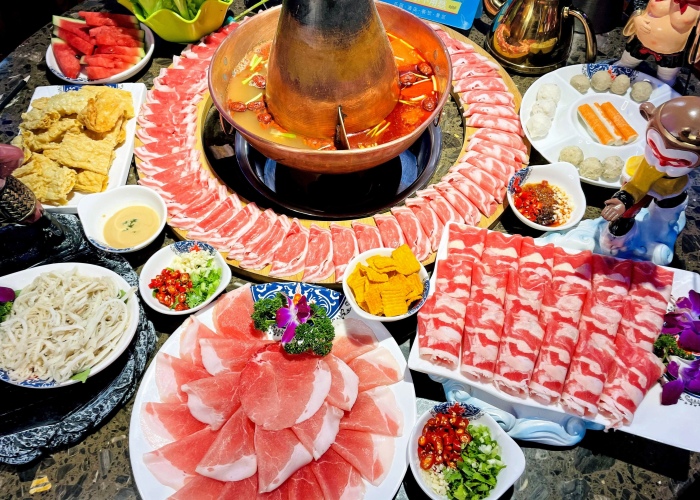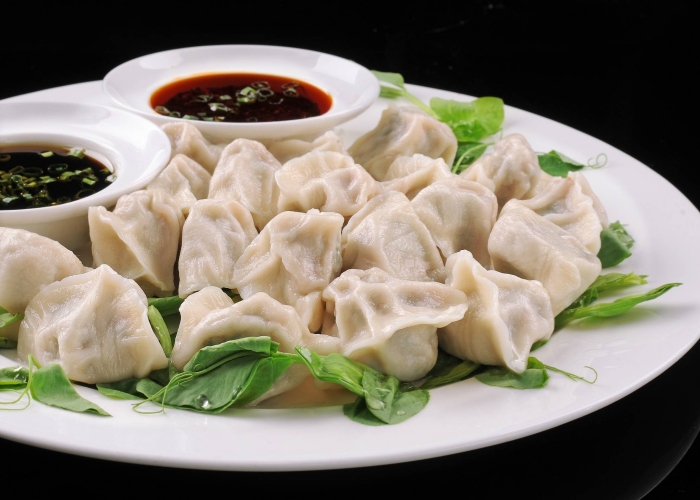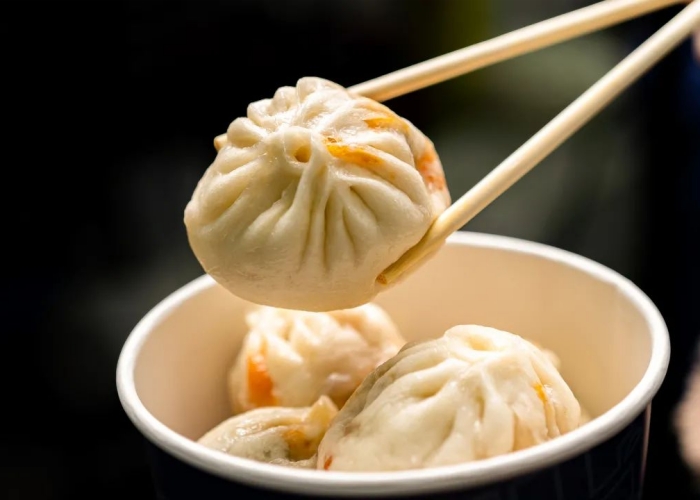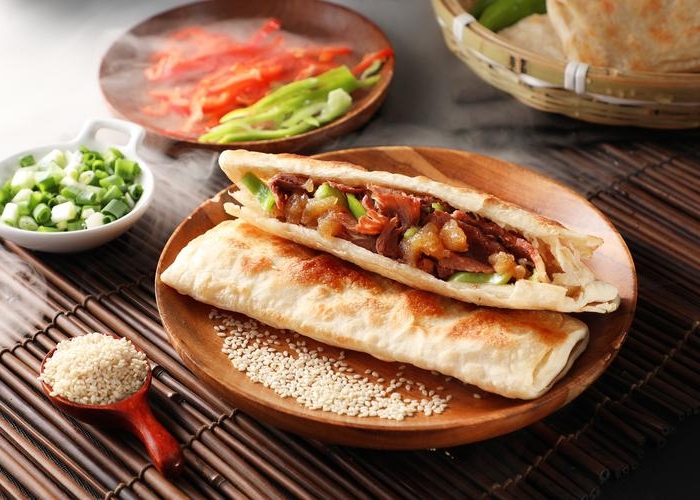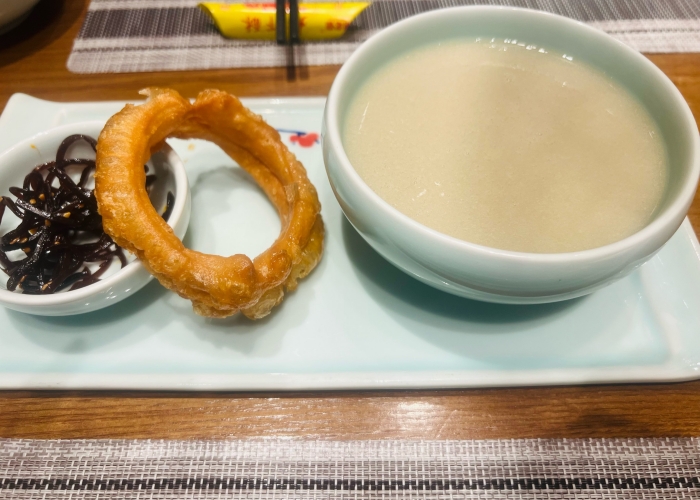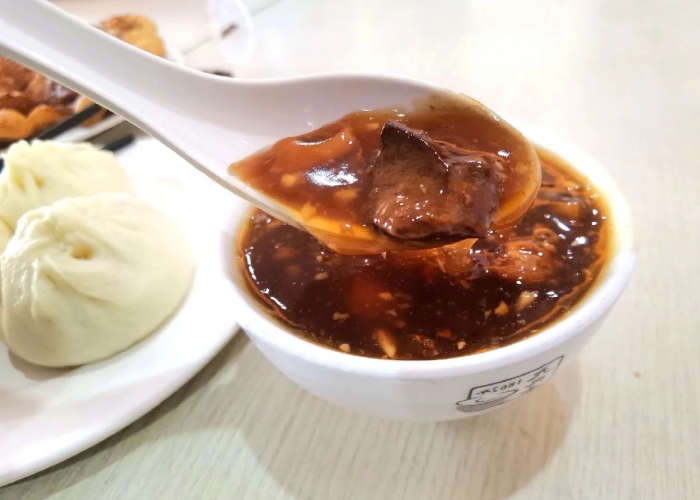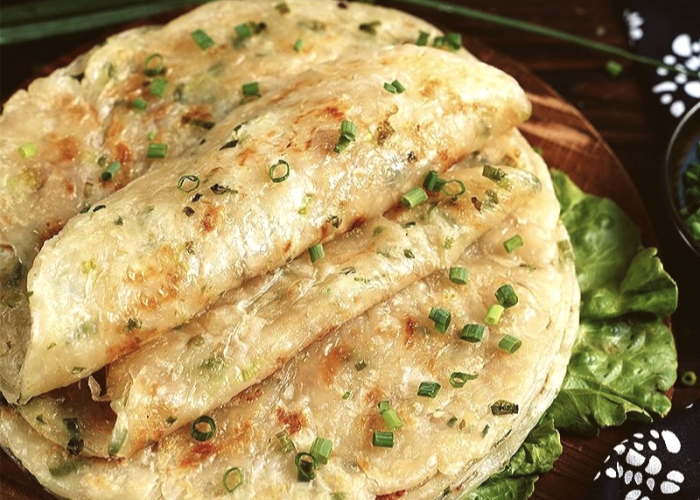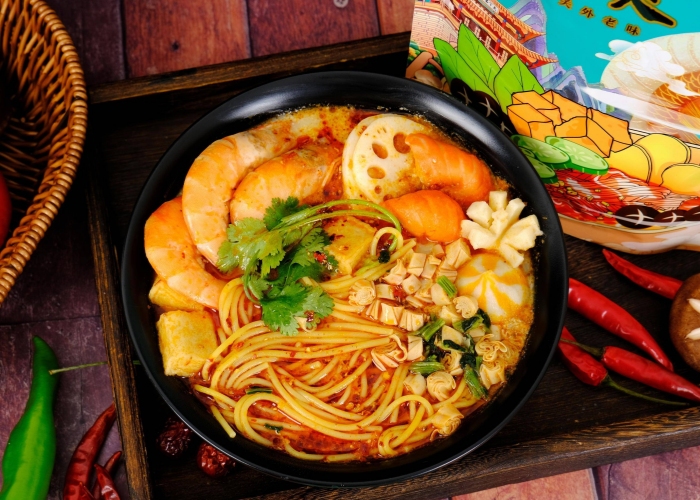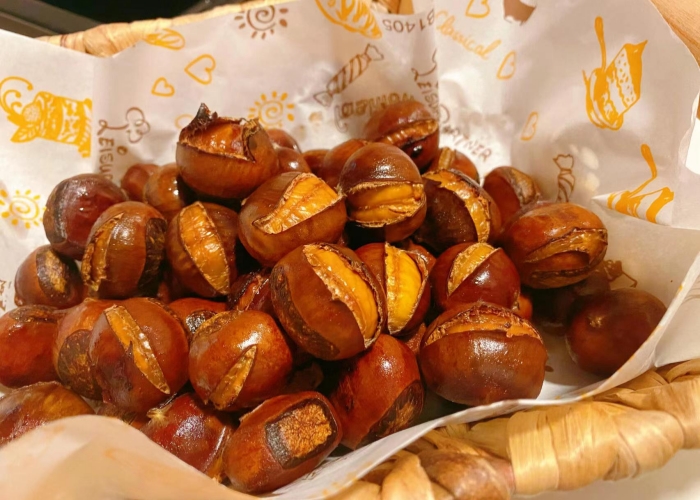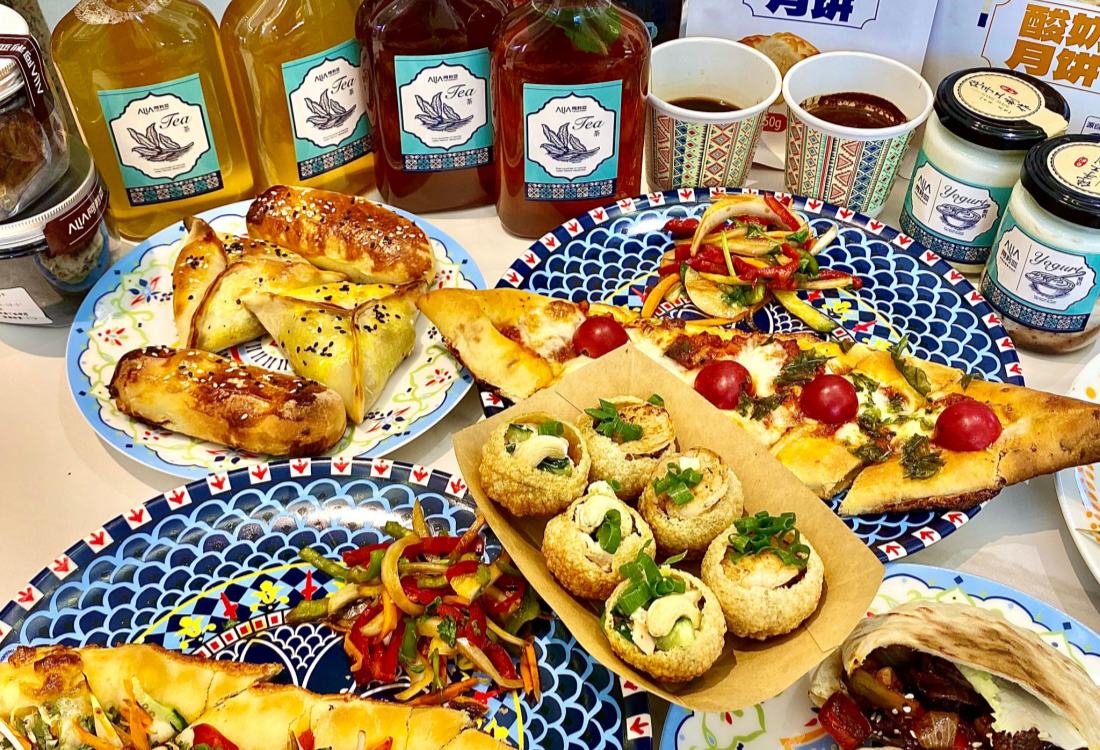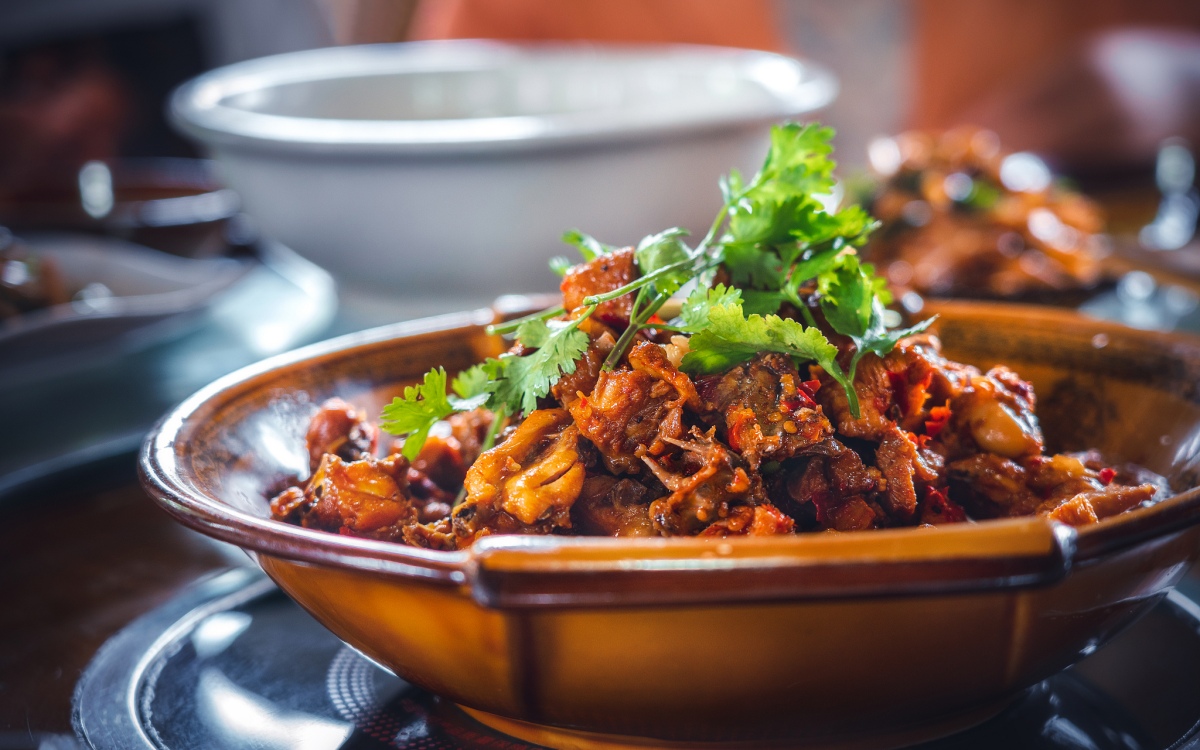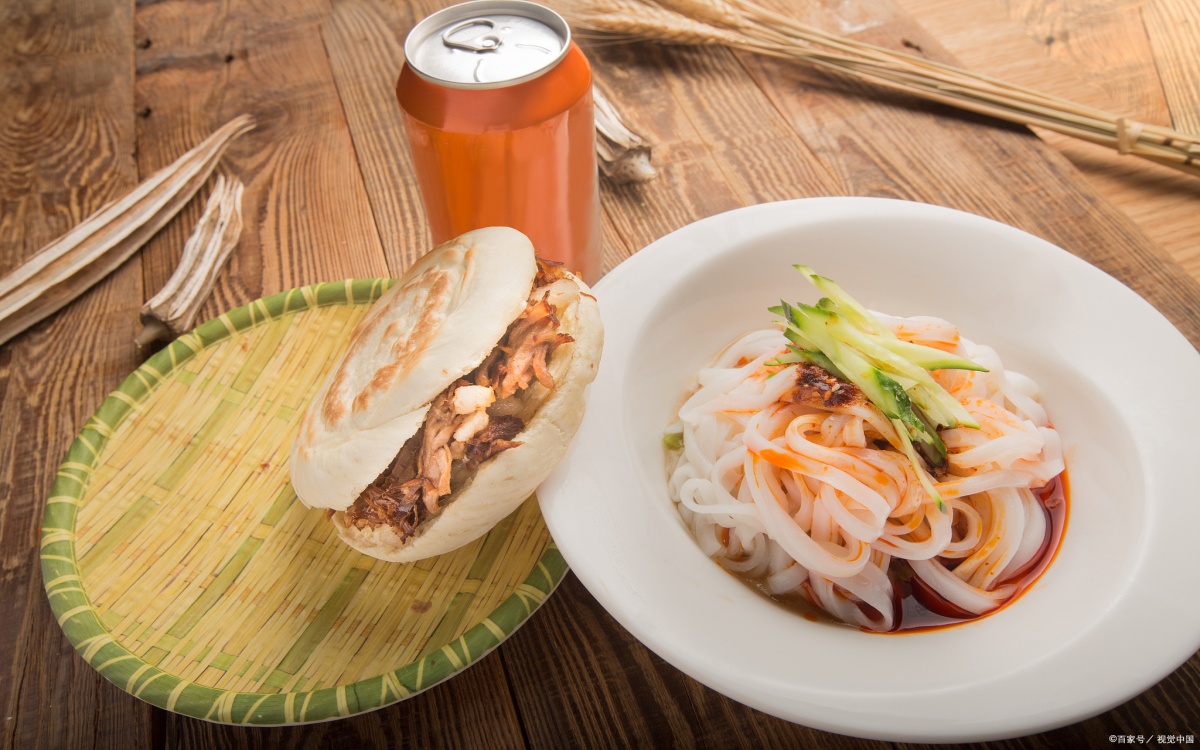Table of Contents
ToggleThis article is to unveil the top 15 must-try foods in Beijing, offering a culinary roadmap that will not only tantalize your taste buds but also inspire you to embark on an unforgettable journey through Beijing. Beijing, a city where ancient traditions meet modern dynamism, extends its fascinating character to its food scene, promising a delightful exploration for every palate.
1. Peking Duck (北京烤鸭)
Undoubtedly Beijing’s most famous culinary export, Peking Duck is an experience as much as a meal. Ducks, specially bred and air-dried, are roasted in either closed or hung ovens until their skin is impossibly crispy and mahogany-colored, while the meat remains succulent and tender. It’s traditionally carved tableside by a skilled chef and served with paper-thin pancakes, sweet bean sauce (tianmianjiang), finely sliced scallions, and cucumber sticks. Assembling your own little duck roll is part of the ritual.
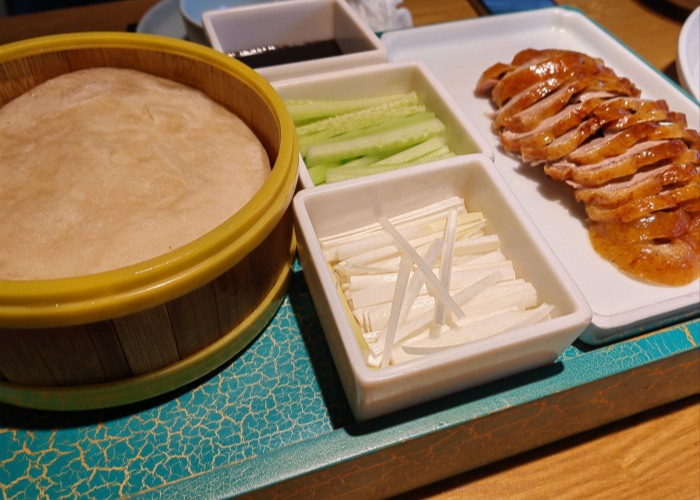

2. Zhajiangmian (炸酱面): Beijing’s Soulful Noodles
A beloved comfort food, Zhajiangmian translates to “fried sauce noodles.” It features thick, chewy hand-pulled wheat noodles topped with a rich, savory sauce made from ground pork (or beef) stir-fried with salty fermented soybean paste (huangjiang or tianmianjiang). A colorful array of fresh or blanched vegetables like cucumber, radish, bean sprouts, and soybeans are served alongside, to be mixed in according to preference.
Every Beijing family often has its own subtle variation of the sauce. It’s a hearty, satisfying dish that offers a true taste of local life, found everywhere from humble street-side eateries to established restaurants.
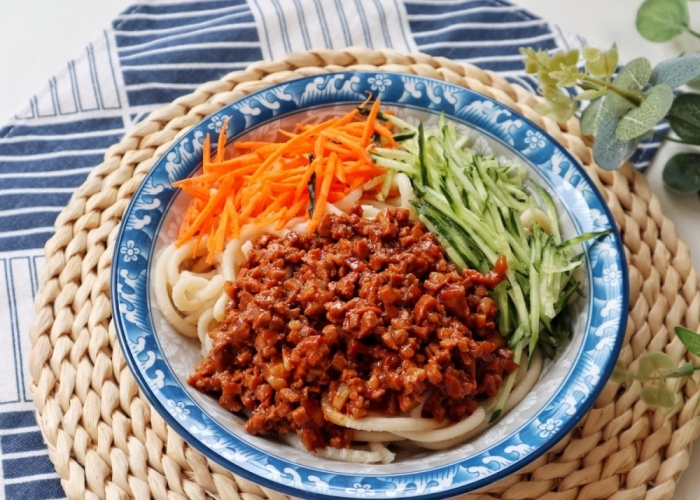
3. Jing Jiang Rousi (京酱肉丝): Shredded Pork in Sweet Bean Sauce
This classic Beijing dish showcases the skillful use of sweet bean sauce (tianmianjiang). Finely shredded pork tenderloin is stir-fried until tender and coated in a glossy, savory-sweet sauce. Jing Jiang Rousi is traditionally served with thin tofu skin pancakes (or sometimes small steamed buns) and julienned scallions. Diners wrap the saucy pork and scallions in the pancakes, creating a delightful contrast of textures and flavors. It’s a popular choice for its balanced taste and interactive eating style.
4. Shuan Yangrou (涮羊肉): Instant-Boiled Mutton Hot Pot
Beijing-style hot pot, or Shuan Yangrou, is a quintessential communal dining experience, especially cherished during the city’s cold winters. Unlike the spicy hot pots of Sichuan, the Beijing version emphasizes the quality of the ingredients, particularly paper-thin slices of tender mutton. The broth is typically light and clear, often flavored with ginger, scallions, and goji berries, and cooked in traditional copper pots with a central chimney.
Diners swish the mutton in the simmering broth for a few seconds until cooked, then dip it into a personalized sauce, usually with a base of sesame paste, often mixed with chili oil, fermented tofu, leek flowers, and cilantro.
5. Jiaozi (饺子): Classic Chinese Dumplings
Jiaozi are a cornerstone of Northern Chinese cuisine and a symbol of prosperity and togetherness, often made and eaten during festivals like Chinese New Year. These delightful crescents of dough can be filled with a variety of ingredients, most commonly minced pork with Chinese cabbage or chives, but also beef, lamb, shrimp, or vegetarian combinations like egg and leek. They can be boiled (shuijiao), steamed (zhengjiao), or pan-fried (guotie or jianjiao).
Served with a dipping sauce of soy sauce, vinegar, and perhaps some chili oil or garlic, Jiaozi are a versatile and universally loved comfort food. Joining a Jiaozi-making session on your Beijing tours can be a fun and delicious way to connect with local culture.
6. Baozi (包子): Fluffy Steamed Buns
Baozi are soft, fluffy steamed buns with various savory or sweet fillings. A staple for breakfast or as a hearty snack, these pillowy delights are incredibly popular throughout Beijing. Common savory fillings include minced pork, beef, vegetables, or a combination like pork and cabbage. Sweet versions might contain red bean paste (dou sha bao) or custard. They are typically steamed in bamboo baskets and eaten hot. Their ubiquity and variety make them an accessible and satisfying taste of everyday Beijing life.
7. Jianbing (煎饼): A Breakfast Crepe
A popular street food breakfast across China, Jianbing in Beijing is a must-try. It’s a savory crepe made from a batter of wheat and grain flour, spread thinly on a circular griddle. An egg is cracked directly onto the crepe, then it’s sprinkled with scallions, cilantro, and various sauces like hoisin, chili paste, or fermented bean paste. The defining feature is the crispy baocui (a deep-fried cracker or wonton skin) folded inside, providing a delightful crunch.
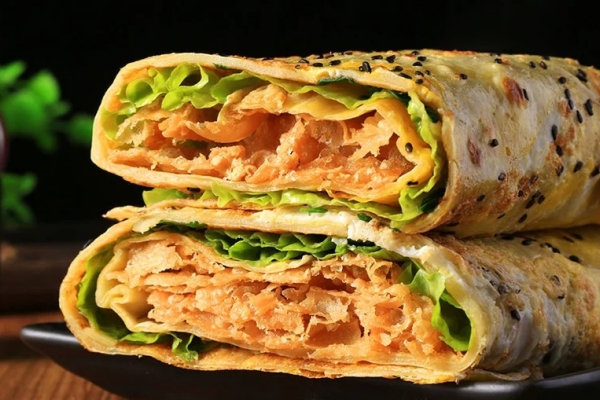
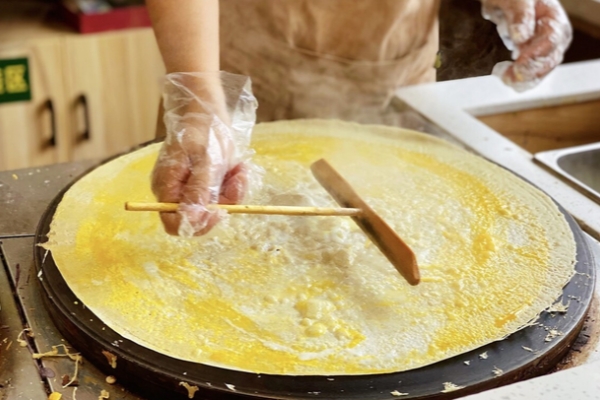
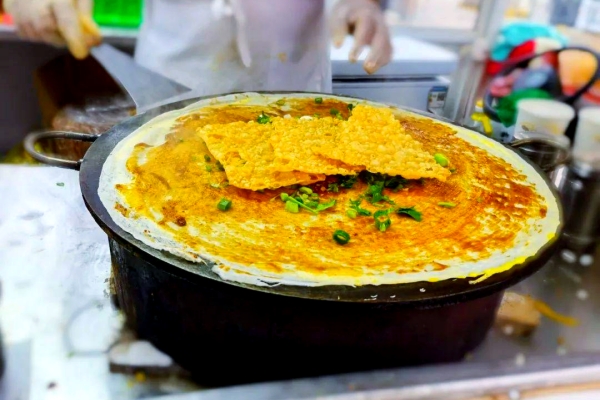
8. Lürou Huoshao (驴肉火烧): Flavorful Donkey Burger
Originating from nearby Hebei province but widely adopted in Beijing, Lürou Huoshao, or “donkey meat fire cake,” is a unique and surprisingly delicious snack. Tender, slow-cooked, and seasoned donkey meat is shredded or chopped, then stuffed into a flaky, crispy baked rectangular bun (huoshao). Often compared in texture to corned beef, the donkey meat is savory and rich. It’s a beloved street food that offers an adventurous yet palatable bite for those looking to try something different.
9. Douzhi (豆汁): Taste of Old Beijing
For the truly adventurous foodie, Douzhi is a quintessential Old Beijing experience. This traditional drink is made from the fermented remnants of mung beans after they’ve been used to make cellophane noodles. It has a unique grayish-green color, a slightly thick consistency, and a distinctive sour, slightly savory, and earthy flavor, often likened to a very mild blue cheese or sour milk.
Locals swear by its health benefits and typically enjoy it warm, often accompanied by pickled vegetables (to cut the sourness) and Jiaoquan (crispy fried dough rings). Trying Douzhi is a rite of passage for those wishing to delve deep into Beijing’s culinary heritage.
10. Tanghulu (糖葫芦): Candied Hawthorn Skewers
A nostalgic treat for Beijingers and a visual delight for visitors, Tanghulu are skewers of Chinese hawthorn berries (or other fruits like strawberries, kiwis, or grapes) coated in a hard, clear candy shell. The tartness of the hawthorn perfectly balances the sweetness of the brittle sugar glaze, creating an addictive sweet-and-sour crunch. You’ll see vendors selling these glistening red skewers all over Beijing, especially during colder months. It’s a simple pleasure and an iconic Beijing street snack.

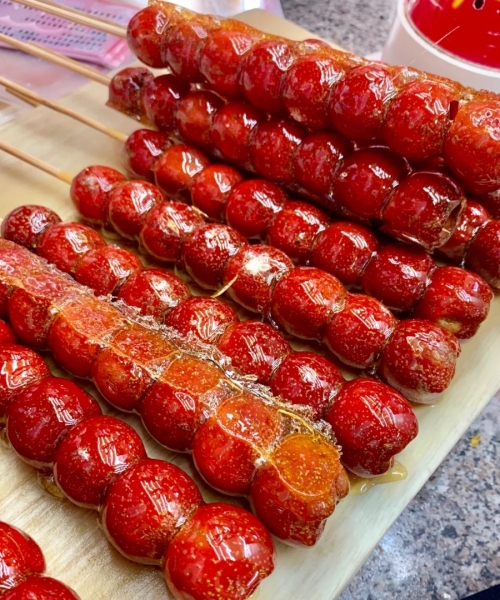
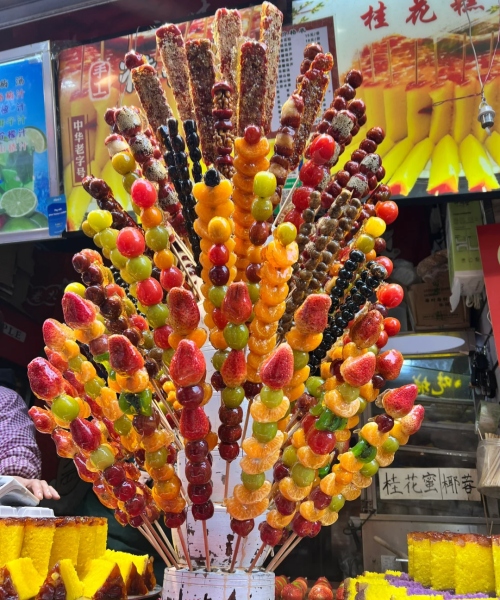
11. Lüdagun (驴打滚): “Rolling Donkey”
Despite its unusual name, Lüdagun (“rolling donkey”) contains no donkey meat. It’s a traditional Beijing sweet snack made from steamed glutinous rice flour dough that is rolled out, spread with a sweet red bean paste filling, then rolled up into a log and coated generously with roasted soybean flour.
The name supposedly comes from the way it’s rolled in the yellowish soybean flour, resembling a donkey kicking up dust. This soft, chewy, and mildly sweet treat is a delightful dessert or snack.
12. Chaogan (炒肝): Stewed Pork Liver
Chaogan is a traditional Beijing snack with a rich history, particularly popular for breakfast. It’s a thick, savory stew made primarily from pork liver and intestines, cooked with garlic and a starch-thickened soy-based sauce. Despite its ingredients, when well-prepared, Chaogan is flavorful and comforting, not overpoweringly strong. It’s often eaten by sipping directly from the bowl, accompanied by steamed buns. This dish offers an authentic taste of old Beijing’s culinary traditions.
13. Cong You Bing (葱油饼): Fragrant Scallion Pancakes
A simple yet irresistible savory flatbread, Cong You Bing is a popular street food and snack. Flaky layers of dough are interspersed with chopped scallions and a hint of salt, then pan-fried until golden brown and crispy on the outside, while remaining chewy inside. The aroma of toasted scallions is incredibly enticing. It’s a testament to how basic ingredients can create something wonderfully flavorful.
14. Malatang (麻辣烫): Spicy Hot Pot Skewers
While originating from Sichuan, Malatang has become immensely popular in Beijing, with local adaptations. It’s a customizable street food where you pick your own skewers of various ingredients – meats, seafood, vegetables, tofu, mushrooms, and noodles – which are then boiled in a communal pot of rich, savory, and often spicy (ma la – numbing and spicy) broth. You pay by the weight or number of skewers. It’s a fun, interactive, and often fiery way to enjoy a quick and satisfying meal, especially popular among younger crowds.
15. Kaohongshu / Tang Chao Lizi (烤红薯 / 糖炒栗子): Roasted Sweet Potatoes & Sugar-Fried Chestnuts
During Beijing’s chilly autumn and winter months, the aroma of Kaohongshu (roasted sweet potatoes) and Tang Chao Lizi (sugar-fried chestnuts) fills the streets. Street vendors roast sweet potatoes in large oil drums until they are soft, caramelized, and incredibly sweet. Chestnuts are often roasted in large woks with hot black sand and sugar, giving them a unique sweet, nutty flavor and making them easy to peel. These simple, warming snacks are a comforting part of Beijing’s street food culture.

8 Days China Ancient Capitals Tour: Beijing Xi’an Luoyang
Frequently Asked Questions About Beijing Foods
What is the most famous food in Beijing?
Without a doubt, Peking Duck (Beijing Kaoya) is the most famous and iconic food in Beijing, renowned worldwide for its crispy skin and succulent meat.
Is Beijing food generally spicy?
Generally, traditional Beijing cuisine is not as spicy as, for example, Chengdu cuisine. Flavors tend to be more savory, subtly sweet, or umami-rich. However, dishes like Malatang, adopted from other regions, can be quite spicy, and you can often request chili in other dishes.
Are there many vegetarian options in Beijing?
Yes, while many classic dishes feature meat, there are numerous vegetarian options available. Many restaurants can prepare vegetable-based versions of popular dishes. You can find vegetable-filled Jiaozi and Baozi, various tofu dishes, and an abundance of fresh vegetable dishes.
What is a good Beijing street food to try for breakfast?
Jianbing (savory crepe) is an extremely popular and highly recommended street food for breakfast in Beijing. It’s quick, delicious, filling, and gives you an authentic taste of local morning routines. Baozi (steamed buns) and Youtiao (fried dough sticks) with soy milk are also common breakfast choices.


